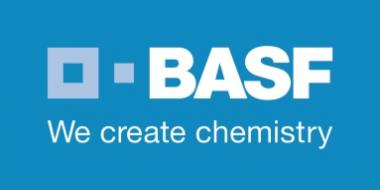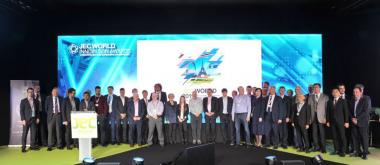BASF, Materialise und Essentium arbeiten gemeinsam an neuen Lösungen für die industrielle additive Fertigung
- Drei Partner mit komplementären Stärken bauen ihre Zusammenarbeit aus
- BASF führt Series-A-Investmentrunde mit Materialise als einem der Co-Investoren an
BASF Venture Capital führt die Series-A-Investmentrunde in Essentium, Inc., einem innovativen Entwickler von disruptiven Lösungen für die industrielle additive Fertigung mit Sitz in College Station, Texas an. Materialise ist einer der Co-Investoren in dieser Series-A-Runde. BASF und Essentium arbeiten bereits gemeinsam an der Weiterentwicklung der Fused Filament Fabrication Technologie (FFF) auf Basis der Essentium FlashFuseTM Technologie. Unter Verwendung von funktionalisierten Co-Extrusions-Filamenten wird mit dieser Technologie eine hohe mechanische Stabilität auch zwischen den Materialschichten ermöglicht. Beide Unternehmen erweitern nun ihre strategische Partnerschaft, um interessierten Kunden global einheitlich den Zugang zu Essentiums neuer High-Speed Extrusion (HSE) Technologieplattform zu ermöglichen. Neben Essentium und BASF wird Materialise Teil der Partnerschaft, mit dem Ziel, 3D-Druck-Software für die Essentium-Technologie zu entwickeln. Dadurch profitieren die Nutzer in vollem Umfang von der Geschwindigkeit der HSE-Technologie. Gleichzeitig erhalten sie Zugriff auf die Softwaremöglichkeiten von Materialise. Die drei Unternehmen bringen ihre komplementären Stärken ein, um gemeinsam die 3D-Druck-Technologie und deren Nutzen für industrielle Kunden zu verbessern und somit die Entwicklung der additiven Fertigung voranzutreiben.
BASF bringt ein umfassendes Material-Know-how, ein breites Produktportfolio und sein globales Netzwerk in die Partnerschaft ein. Materialise zeichnet sich durch eine fast 30-jährige Expertise in der Entwicklung von innovativen Software-Lösungen für den 3D-Druck aus. Essentium entwickelt eine Technologie-Plattform für die industrielle additive Fertigung. Basis sind Innovationen im Bereich High-Speed Extrusion (HSE), die FlashFuseTM Technologie, sowie Hochleistungsfilamente für anspruchsvolle Kundenanwendungen. Gemeinsam wollen die Partner innovative Systemlösungen mit einer abgestimmten Kombination aus Hardware, Software und Materialien entwickeln, um das Potenzial von Essentiums einzigartiger Technologie optimal ausschöpfen zu können.
„Mit dem gemeinsamen Investment stärken wir unsere Zusammenarbeit mit Essentium und Materialise sowie das Innovationspotenzial dieses schlagkräftigen Teams zugunsten der BASF-Kunden“, sagt Markus Solibieda, Geschäftsführer der BASF Venture Capital.
„Mit diesem strategischen Investment fokussieren sich Essentium und BASF auf eine Verbesserung der Supply Chain, der Materialbeständigkeit und des Materialzugangs. Wir freuen uns ebenso, eine neue Partnerschaft mit Materialise einzugehen. Alle drei Unternehmen fokussieren ihre globalen Bestrebungen smarte Lösungen auf dem Gebiet der additiven Fertigung herauszubringen. Gemeinsam sind wir davon überzeugt, dass Hersteller aus aller Welt mit dem verbreiterten Zugang zu unseren neuen Lösungen sowie gestützt durch den kunden-zentrierten Ansatz, nun schneller und kostengünstiger produzieren können“, ergänzt Dr. Blake Teipel (CEO Essentium Inc.).
“Materialise, Essentium und BASF haben eine gemeinsame Vision des Wachstums in der 3D-Druck-Branche, die auf der Schaffung von bedeutenden Anwendungen in einem offenen und dynamischen Ökosystem basiert”, sagt Bart Van der Schueren, CTO von Materialise. “Diese Partnerschaft hilft, ein offeneres Marktmodell voranzubringen, das die Übernahme von 3D-Druck-Technologien in industriellen Anwendungen fördert, indem es Nutzern mehr Kontrolle, eine größere Auswahl an Materialien und schließlich niedrigere Kosten und somit den Zugang zu größeren Stückzahlen in der additiven Fertigung bietet.“
Neben BASF und Materialise beteiligt sich auch ein Konsortium von Venture Capital Investoren an Essentium. BASF, Materialise und Essentium wollen vorangehen, um gemeinsam den Wandel vom 3D-Druck zur skalierbaren additiven Fertigung zu gestalten.
BASF











